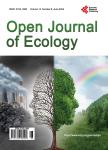Antarctic Cyanobacteria Biodiversity Based on ITS and <i>Trn</i>L Sequencing and Its Ecological Implication
Antarctic Cyanobacteria Biodiversity Based on ITS and <i>Trn</i>L Sequencing and Its Ecological Implication作者机构:Department of Genetics and Molecular Biology University of Rome La Sapienza Rome Italy ENEA Italian National Agency for New Technologies Energy and Sustainable Economic Development Research Center Casaccia Rome Italy Institute of Ecosystem Studies CNR-ISE Florence Italy
出 版 物:《Open Journal of Ecology》 (生态学期刊(英文))
年 卷 期:2014年第4卷第8期
页 面:456-467页
学科分类:1002[医学-临床医学] 100214[医学-肿瘤学] 10[医学]
主 题:Antarctic Cyanobacteria Biodiversity ITS tRNALeu UAA Secondary Structure
摘 要:Antarctic cyanobacteria biodiversity was investigated by simultaneous sequencing of the nuclear ribosomal internal transcribed spacer (ITS flanked by partial 16S and 23S), and Chloroplast tRNALeu UAA intron (TrnL), exploring whether such morphotypes constitute distinct species and explaining their current distribution. We identified Nostocales, Chrococcales and Oscillatoriales species, collected in different habitats (soil, algal mats, lake sediments, ice-water) after their growth in cultures. By comparative sequence analyses available in Genbank, our results proved to be mostly in agreement with both TrnL and ITS, in the identification of the strains, particularly for Nostocales. Although ITS demonstrated more usefully than TrnL did in identifying Oscillatoriales and Chroococcales, due to the frequent lack of the intron in these groups, our results lead us to support an independent phylogenetic dataset of ITS and TrnL (the latter based on conserved regions) producing not only concordant clusters but also a secondary structure. Specific assignments of the secondary structure evidenced by different cyanobacteria groups, especially the D1-D1’ region of ITS and the P6b region of TrnL. For the latter region, the sequences analyzed for Nostoc species could be divided into the two classes previously identified, on the basis of different heptanucleotide repeats in P6b which were not



